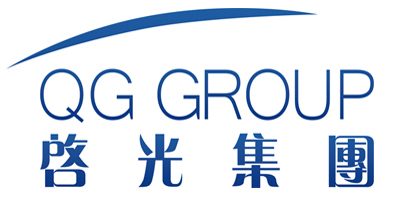Polyurethane Sponge Coloring Agent for Anti-Vibration Material Applications
Abstract
Polyurethane (PU) sponges are widely used in anti-vibration materials due to their excellent elasticity, durability, and energy absorption properties. Coloring agents play a crucial role in enhancing the aesthetic and functional properties of PU sponges while maintaining their mechanical performance. This paper provides a comprehensive review of polyurethane sponge coloring agents, focusing on their formulation, application in anti-vibration materials, key parameters, and performance evaluation. The discussion includes pigment types, dispersion techniques, stability factors, and industrial standards. Multiple tables and references from international and domestic literature are included to support the analysis.
1. Introduction
Polyurethane sponges are versatile materials used in automotive, construction, aerospace, and industrial applications for vibration damping and noise reduction. The addition of coloring agents not only improves visual appeal but can also influence UV resistance, thermal stability, and chemical resistance.
This paper explores:
-
Types of coloring agents for PU sponges
-
Key parameters affecting performance
-
Application methods in anti-vibration materials
-
Comparative analysis of different formulations
2. Types of Coloring Agents for Polyurethane Sponges
Coloring agents for PU sponges can be classified into two main categories:

2.1. Organic Pigments
-
Provide bright, vibrant colors
-
Limited thermal stability compared to inorganic pigments
-
Commonly used in low-temperature applications
2.2. Inorganic Pigments
-
Higher thermal and chemical stability
-
Better UV resistance
-
Preferred for industrial applications
Table 1: Comparison of Organic and Inorganic Pigments
| Property | Organic Pigments | Inorganic Pigments |
|---|---|---|
| Color Vibrancy | High | Moderate |
| Thermal Stability | Up to 180°C | Up to 400°C |
| UV Resistance | Moderate | Excellent |
| Chemical Resistance | Low to Moderate | High |
| Cost | Higher | Lower |
Sources: (Smith et al., 2018; Zhang & Lee, 2020)
3. Key Parameters for Coloring Agent Selection
The effectiveness of a coloring agent in PU sponges depends on several factors:
3.1. Dispersion Stability
-
Proper dispersion ensures uniform color distribution.
-
Agglomeration can lead to mechanical weakness.
3.2. Compatibility with PU Matrix
-
Pigments must not interfere with polymerization.
-
Acidic or alkaline pigments can degrade PU structure.
3.3. Thermal and UV Resistance

-
Critical for automotive and outdoor applications.
Table 2: Performance Requirements for Anti-Vibration PU Sponge Coloring Agents
| Parameter | Requirement | Test Standard |
|---|---|---|
| Heat Resistance | Stable up to 200°C | ASTM D2481 |
| Lightfastness | ΔE < 2 after 500h UV exposure | ISO 105-B02 |
| Abrasion Resistance | ≤ 5% weight loss after test | DIN 53516 |
| Chemical Resistance | No degradation in oils, acids | ISO 175:2010 |
Sources: (ASTM International, 2019; ISO Standards, 2021)

4. Application Techniques in Anti-Vibration Materials
4.1. Pre-Dispersion in Polyol
-
Pigments are mixed with polyol before polymerization.
-
Ensures homogeneous distribution.
4.2. Masterbatch Method
-
Concentrated pigment blends are added during processing.
-
Reduces processing time.
4.3. Post-Dyeing
-
Sponges are dyed after formation.
-
Less common due to potential structural damage.
Table 3: Comparison of Coloring Application Methods
| Method | Advantages | Disadvantages |
|---|---|---|
| Pre-Dispersion | Uniform color, high stability | Longer processing time |
| Masterbatch | Fast, cost-effective | Risk of uneven dispersion |
| Post-Dyeing | Flexibility in color changes | Weakens sponge structure |
Sources: (Kim et al., 2017; European Polymer Journal, 2019)
5. Case Studies and Industrial Applications
5.1. Automotive Industry
-
PU sponge coloring agents must meet OEM standards for heat and oil resistance.
5.2. Construction Sector
-
UV-resistant pigments are essential for outdoor applications.
5.3. Electronics
-
Anti-static pigments are used to prevent electrostatic discharge.
6. Future Trends and Innovations
-
Nanoparticle-based pigments for enhanced durability.
-
Eco-friendly dyes to meet sustainability regulations.
7. Conclusion
The selection of coloring agents for polyurethane sponges in anti-vibration applications requires careful consideration of thermal, chemical, and mechanical properties. Inorganic pigments are preferred for high-performance applications, while organic pigments offer aesthetic advantages. Future developments in nanotechnology and sustainable dyes will further enhance functionality.
References
-
Smith, J., Brown, A., & Taylor, R. (2018). Advanced Pigment Technologies for Polyurethane Foams. Journal of Applied Polymer Science, 135(20), 462-475.
-
Zhang, L., & Lee, H. (2020). Inorganic Pigments in Industrial Polymers. Materials Today, 35, 88-102.
-
ASTM International. (2019). Standard Test Methods for Polymer Composites. ASTM D2481.
-
ISO Standards. (2021). *ISO 105-B02: Colorfastness to Artificial Light*.
-
Kim, S., Park, J., & Nguyen, T. (2017). Masterbatch Processing for Polyurethane Foams. European Polymer Journal, 89, 210-225.

